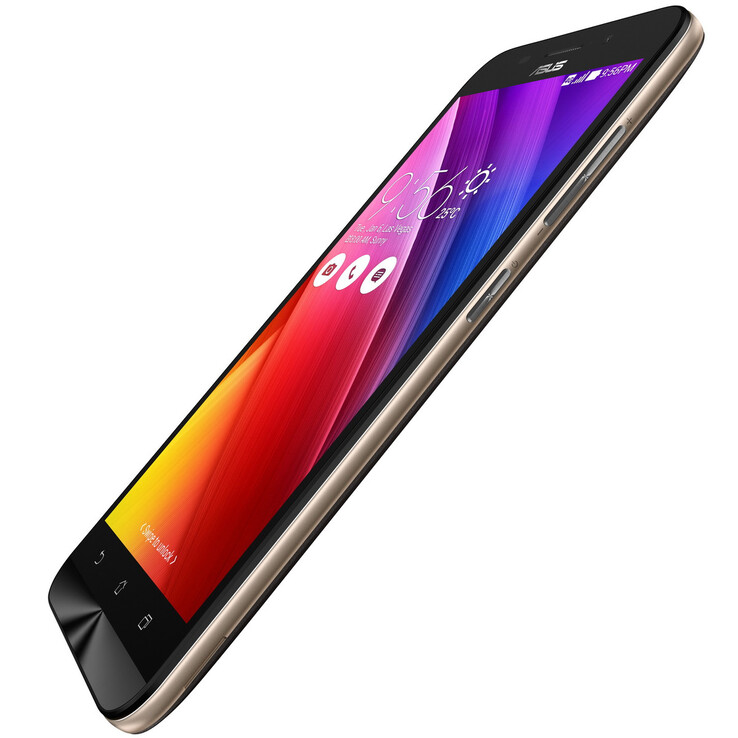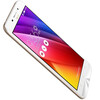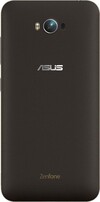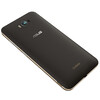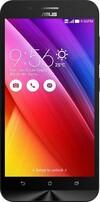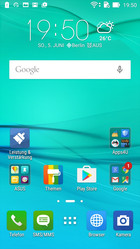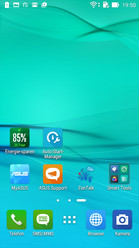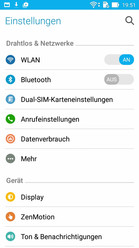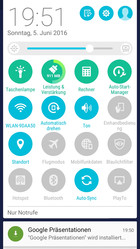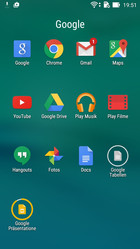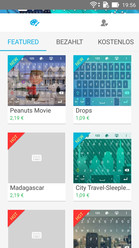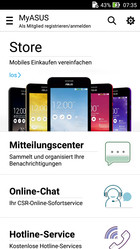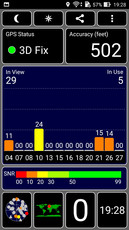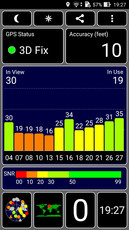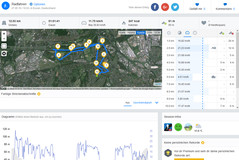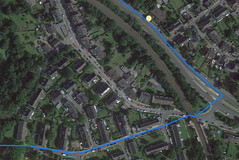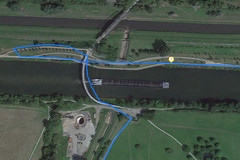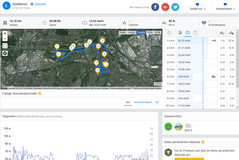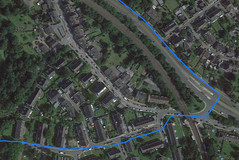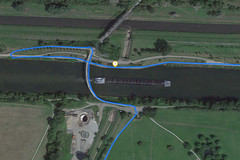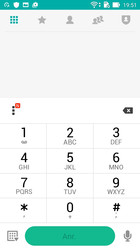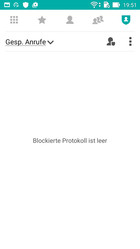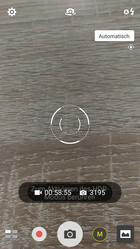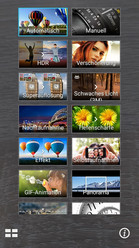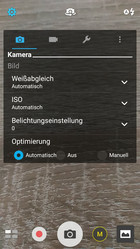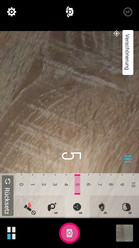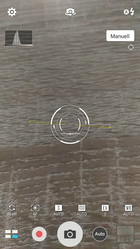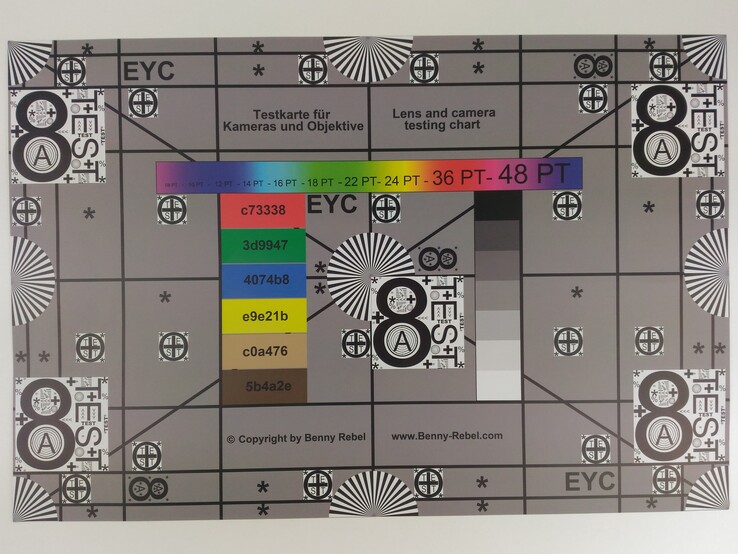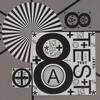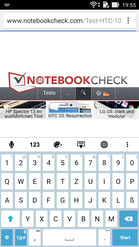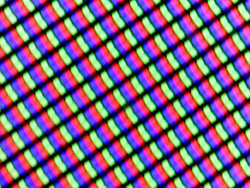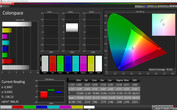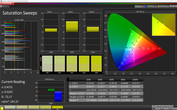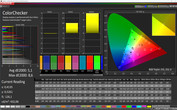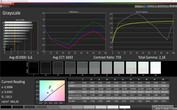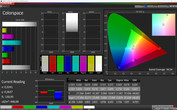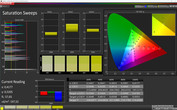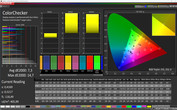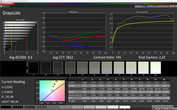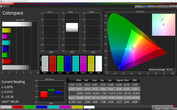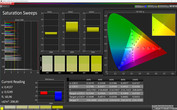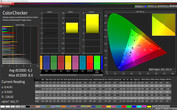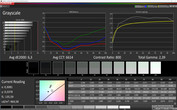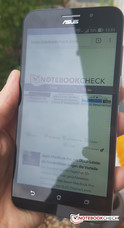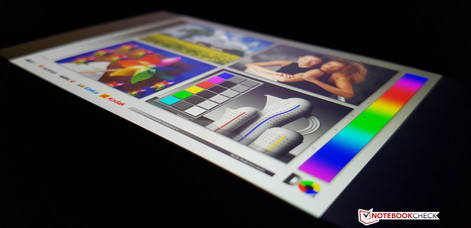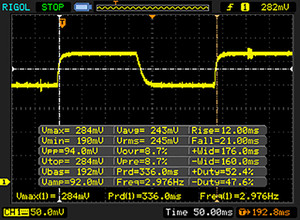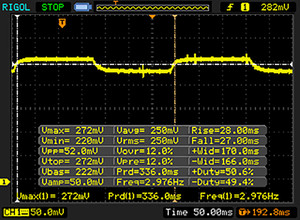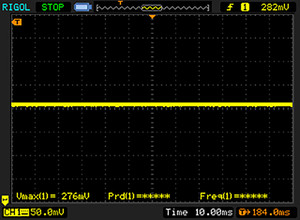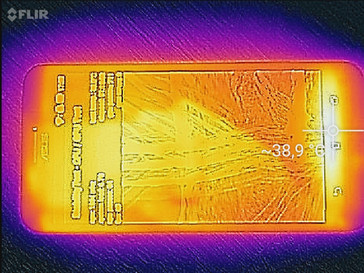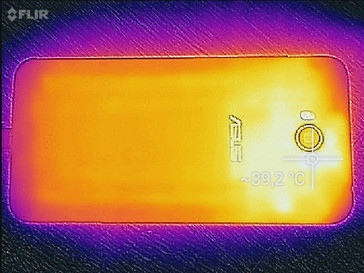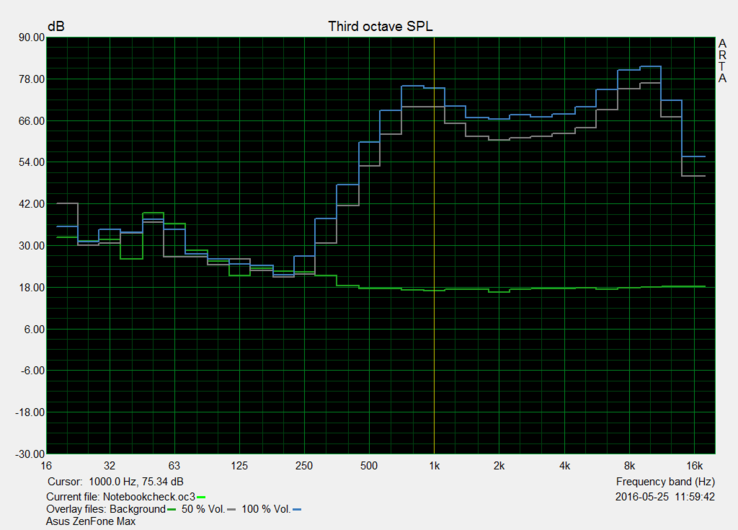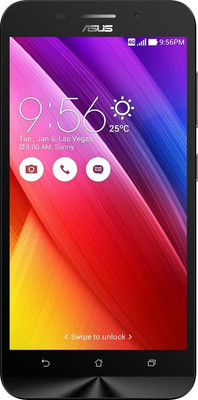Asus ZenFone Max Smartphone Review
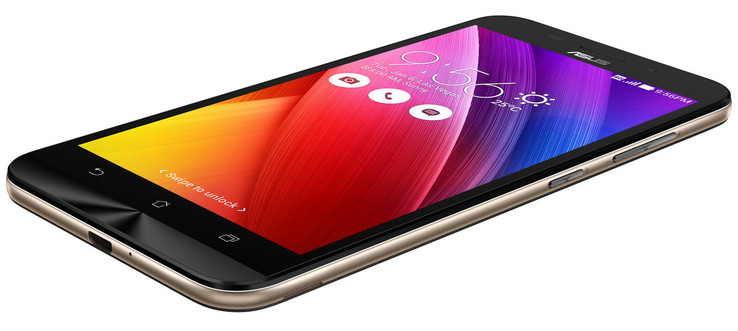
For the original German review, see here.
With the ZenFone Max, the Taiwanese company Asus expands its ZenFone lineup by another model focused on long battery life and enduring system readiness. A li-ion battery with a capacity of 5000 mAh in the 5.5-inch LTE smartphone is to ensure that. The handset's high definition resolution panel is also designed for this. A Snapdragon 410 quad-core SoC supported by 2 GB of LPDDR3 RAM and 16 GB of internal storage clocks inside the ZenFone Max.
The ZenFone Max is available in black or white for approximately 250 Euros (~$281) in the manufacturer's online shop - other sellers already offer the handset for a bit less. Many smartphones by various manufacturers range on a similar price level. We opted for ZTE's Blade V7, Acer's Liquid Z630S, Asus' ZenFone Selfie ZD551KL and Samsung's Galaxy A3 (2016) as comparison devices in this test.
Case
A flush-closing glass front protects the ZenFone Max's 5.5-inch screen - it is scratch-resistant Corning Gorilla Glass 4. Following the ZEN design philosophy, the transition between glass panel and plastic part on the smartphone's underside is very palpable and not level. Overall, the 202-gram heavy and almost 11-millimeter tall device is a bit unhandy.
The volume control and power button are well-constructed and hardly wobble. The surface of the removable back cover features a kind of leather look as known from other handsets (e.g. Samsung Galaxy Note 3). The feel is good but still remote from the impression that higher-quality materials, such as glass or metal, convey. The 16 GB internal storage can be extended via a micro-SD card after removing the back cover. However, the battery cannot be replaced.
The back barely dents and the casing's stiffness makes a very good impression. However, it produces creaking noises when holding the handset with a bit of pressure.
Connectivity
The ZenFone Max offers the standard connectivity for this price range. The 16 GB internal eMMC storage is reduced to just below 10.47 GB after initial start. The hybrid slot can be used for expanding the storage via a micro-SD card when the dual-SIM functionality is not needed (max. 64 GB). Apps can also be moved to the external storage via A2SD.
The micro-USB 2.0 port in the ZenFone Max is used for recharging the handset, data sharing with a computer and it can also be used for connecting peripherals via the OTG (on-the-go) adapter. Furthermore, wireless transmission of displayed content to an external monitor is supported, and it functioned without problems in the test in conjunction with a Sony Android TV.
A highlight of Asus' handset is that the 5000 mAh battery can be used as a kind of power bank for supplying other devices with power via the micro-USB port.
Software
Asus ships the ZenFone Max with the older Android 5.0 Lollipop (2014) version ex-factory. However, a 1.1 GB update to the latest Android 6.0 Marshmallow version was installed on the device OTA (over the air) during the tests. Although the system interface has barely changed compared with Android 5.0, the latest software offers typical Android 6.0 features, such as determining application rights in the settings menu.
The manufacturer's own ZenUI makes a strongly modified impression compared with stock Android. Neither the settings menu nor the home screen or app drawer resembles the design interpretation of the operating system by Google. Besides a lot of bloatware, - optionally also third-party apps when checks were missed at initiation - Asus preloads additional software features that are to extend the battery life, such as a RAM optimizer or diverse performance modes for energy-saving among other things.
Communication & GPS
The dual-SIM smartphone can access mobile Internet with up to two micro-SIM cards. Both slots support the LTE frequency bands used in Germany (1, 3, 20), but only in category 4 (DL/UL: 150/50 Mbit/s). The connection quality and reception were good in a major city.
Bluetooth 4.0 can be used for wireless communication with end devices. Beyond that, Wi-Fi 802.11 b/g/n is on board. The reception quality of the integrated Wi-Fi module is very good. The attenuation of almost -40 dBm was low in the router's direct vicinity (Telekom Speedport, W921V). It increased up to -55 dBm in the neighboring room.
AGPS and GLONASS as well as the Chinese Beidou satellite navigation system are used for mobile localization. Outdoor tracking was performed without much delay and with an accuracy of 10 feet, so approximately 3 meters. A weak signal for tracking the position is possible indoors, but the accuracy is very low. We additionally test the accuracy on a roughly 12-kilometer bike tour and compare the outcomes with Garmin's Edge 500 professional navigation system. In the end, a difference of almost 140 meters separate the mid-range smartphone from the professional system - this difference is less than between the GPS module in HTC's 10 reference device and Garmin's Edge 500. In total, a good rate that should suffice for navigating in a car or on a bike.
Telephone & Call Quality
Call quality is good and the callers are well-intelligible via the earpiece. The ZenFone Max's microphone is, however, only satisfactory. The voice is often transmitted too quietly to the contact.
The phone app is very extensive. The user can search for contacts directly via keyboard or voice input, or look for favorites via sub-menus that takes the user to recent calls and contacts.
Cameras
The 13 MP primary camera on the back of Asus' ZenFone Max has a resolution of 4096x3072 pixels in the 4:3 format. It sports an integrated laser auto-focus that, according to the manufacturer, allows shooting very sharp close-ups. We cannot confirm this based on our test - blurriness characterizes macro-photos despite laser AF (scene 3: room).
High-detail photos are possible with the 13 MP camera module in sufficiently bright light conditions. However, photos darken visibly due to the low dynamic range (scene 1: bridge). The color reproduction makes a cool impression and can look a bit bluish (scene 2: woods). The image sensor captures a lot of light with an aperture of f/2.0 - i.e. the ratio of focal length to diameter. This results in sufficiently illuminated photos even in dark scenarios. However, a visible image noise evolves in low-light conditions (scene 3: room).
The front-facing camera has a resolution of 5 megapixels and an 85 ° wide angle lens as well as an f/2.0 aperture. The image quality is sufficient for selfies, but the photos are often a bit blurred. The ZenFone Max records videos in 1080p at 30 FPS and 720p at 60 FPS.
The camera app is very extensive and offers diverse settings, such as white balance, ISO rates and exposure compensation, in manual mode.
Accessories & Warranty
Asus ships the smartphone with a modular power supply, USB cable and an OTG adapter. 5 GB of ASUS WebStorage is also included.
The ZenFone Max comes with a 24-month manufacturer warranty.
Input Devices & Handling
Three capacitive control buttons in typical Asus design are below the screen. They are not illuminated. The manufacturer preloads its virtual Zen UI keyboard.
The capacitive touchscreen is sensitive up into the corners and provides a pleasant gliding quality that allows smooth use. The ZenFone Max responds quickly and accurately to inputs.
Display
The 5.5-inch LCD panel has a resolution of 1280x720 pixels and a pixel density of 267 PPI. That is enough for a sufficiently sharp reproduction of displayed content but is comparatively little at a screen diagonal of almost 14 centimeters for a mid-range handset of this price range.
The IPS panel in the ZenFone Max achieves up to 611 cd/m² in our brightness measurement - a very good rate that is, however, only achieved using the ambient light sensor. The brightness decreases to 511 cd/m² on average since the screen's illumination of 84% is relatively heterogeneous. Asus' smartphone achieves a good brightness of 462 cd/m² without the light sensor. We ascertained a maximum of 595 cd/m² in the measurement of equally distributed bright and dark areas (APL50 / with enabled light sensor).
| |||||||||||||||||||||||||
Brightness Distribution: 84 %
Center on Battery: 586 cd/m²
Contrast: 1028:1 (Black: 0.57 cd/m²)
ΔE ColorChecker Calman: 4.2 | ∀{0.5-29.43 Ø4.77}
ΔE Greyscale Calman: 6.3 | ∀{0.09-98 Ø5}
Gamma: 2.39
CCT: 6614 K
| Asus ZenFone Max ZC550KL IPS, 1280x720, 5.5" | ZTE Blade V7 IPS, 1920x1080, 5.2" | Acer Liquid Z630S IPS, 1280x720, 5.5" | Asus ZenFone Selfie ZD551KL IPS, 1920x1080, 5.5" | Samsung Galaxy A3 2016 Super AMOLED, 1280x720, 4.7" | HTC 10 Super LCD 5, 2560x1440, 5.2" | |
|---|---|---|---|---|---|---|
| Screen | -40% | -0% | -6% | 26% | 16% | |
| Brightness middle (cd/m²) | 586 | 409 -30% | 350 -40% | 392 -33% | 386 -34% | 445 -24% |
| Brightness (cd/m²) | 566 | 411 -27% | 345 -39% | 382 -33% | 394 -30% | 434 -23% |
| Brightness Distribution (%) | 84 | 96 14% | 84 0% | 93 11% | 88 5% | 93 11% |
| Black Level * (cd/m²) | 0.57 | 0.38 33% | 0.27 53% | 0.41 28% | 0.36 37% | |
| Contrast (:1) | 1028 | 1076 5% | 1296 26% | 956 -7% | 1236 20% | |
| Colorchecker dE 2000 * | 4.2 | 9.4 -124% | 4.7 -12% | 5.55 -32% | 1.11 74% | 2.8 33% |
| Colorchecker dE 2000 max. * | 8.4 | 17.6 -110% | 8.5 -1% | 3.35 60% | 5.8 31% | |
| Greyscale dE 2000 * | 6.3 | 11.6 -84% | 5.6 11% | 4.7 25% | 1.34 79% | 3.7 41% |
| Gamma | 2.39 92% | 2.25 98% | 1.84 120% | 2.7 81% | 2.12 104% | 2.31 95% |
| CCT | 6614 98% | 9597 68% | 6795 96% | 7270 89% | 6441 101% | 7164 91% |
* ... smaller is better
The screen's high brightness leads to a good contrast ratio of 1028:1 but only a middling black value of 0.57 cd/m² (APL50: 0.57 cd/m²) for an IPS panel. The analysis using the CalMAN software and spectrophotometer shows a minor shift from the reference color space. Furthermore, the measured color temperature of 6614 K is close to the ideal rate of 6500 K. The grayscale levels have a light greenish tint in bright areas.
The bright LCD screen allows recognizing content outdoors even in very bright sunlight. Reflections are largely outshone in direct sunlight. The viewing-angle stability of the liquid crystal display is good thanks to IPS technology, and the colors remain stable and high-contrast from a flat viewing angle. Annoying backlight bleeding was not discovered in our review sample.
Display Response Times
| ↔ Response Time Black to White | ||
|---|---|---|
| 33 ms ... rise ↗ and fall ↘ combined | ↗ 12 ms rise | |
| ↘ 21 ms fall | ||
| The screen shows slow response rates in our tests and will be unsatisfactory for gamers. In comparison, all tested devices range from 0.1 (minimum) to 240 (maximum) ms. » 89 % of all devices are better. This means that the measured response time is worse than the average of all tested devices (20.2 ms). | ||
| ↔ Response Time 50% Grey to 80% Grey | ||
| 55 ms ... rise ↗ and fall ↘ combined | ↗ 28 ms rise | |
| ↘ 27 ms fall | ||
| The screen shows slow response rates in our tests and will be unsatisfactory for gamers. In comparison, all tested devices range from 0.165 (minimum) to 636 (maximum) ms. » 91 % of all devices are better. This means that the measured response time is worse than the average of all tested devices (31.6 ms). | ||
Screen Flickering / PWM (Pulse-Width Modulation)
| Screen flickering / PWM not detected | |||
In comparison: 53 % of all tested devices do not use PWM to dim the display. If PWM was detected, an average of 8081 (minimum: 5 - maximum: 343500) Hz was measured. | |||
Performance
Asus relies on Qualcomm's 64 bit capable Snapdragon 410 from 2013. Up to 2 GB of working memory supports it. The former mid-range SoC clocks at 1.2 GHz.
The Snapdragon 410 allows smooth navigating on the home screen in routine use. However, visible stutters and lags became apparent when opening apps which load the processor. Browsing via the preloaded Chrome browser functioned well, but longer waiting times were the rule here as well (e.g. before content was loaded). The benchmarks show a rather below-average performance compared with the capacities of the comparison devices from the same price range - the opponents outperform the ZenFone Max particularly in graphics-driven tests.
The determined read and write speeds of the integrated storage are not very high with 130.6 MB/s and 31.1 MB/s. The access times of the micro-SD card slot in the ZenFone Max that we tested with our Toshiba Exceria Pro M401 reference card (max. 95 MB per second read and max. 80 MB per second write) are also only average.
| AndroBench 3-5 | |
| Sequential Write 256KB SDCard (sort by value) | |
| Asus ZenFone Max ZC550KL | |
| ZTE Blade V7 | |
| HTC 10 | |
| Sequential Read 256KB SDCard (sort by value) | |
| Asus ZenFone Max ZC550KL | |
| ZTE Blade V7 | |
| HTC 10 | |
| Random Write 4KB (sort by value) | |
| Asus ZenFone Max ZC550KL | |
| ZTE Blade V7 | |
| Acer Liquid Z630S | |
| Asus ZenFone Selfie ZD551KL | |
| Samsung Galaxy A3 2016 | |
| HTC 10 | |
| Random Read 4KB (sort by value) | |
| Asus ZenFone Max ZC550KL | |
| ZTE Blade V7 | |
| Acer Liquid Z630S | |
| Asus ZenFone Selfie ZD551KL | |
| Samsung Galaxy A3 2016 | |
| HTC 10 | |
| Sequential Write 256KB (sort by value) | |
| Asus ZenFone Max ZC550KL | |
| ZTE Blade V7 | |
| Acer Liquid Z630S | |
| Asus ZenFone Selfie ZD551KL | |
| Samsung Galaxy A3 2016 | |
| HTC 10 | |
| Sequential Read 256KB (sort by value) | |
| Asus ZenFone Max ZC550KL | |
| ZTE Blade V7 | |
| Acer Liquid Z630S | |
| Asus ZenFone Selfie ZD551KL | |
| Samsung Galaxy A3 2016 | |
| HTC 10 | |
| AnTuTu v6 - Total Score (sort by value) | |
| Asus ZenFone Max ZC550KL | |
| ZTE Blade V7 | |
| Acer Liquid Z630S | |
| Samsung Galaxy A3 2016 | |
| HTC 10 | |
| Geekbench 3 | |
| 64 Bit Single-Core Score (sort by value) | |
| Asus ZenFone Max ZC550KL | |
| ZTE Blade V7 | |
| Asus ZenFone Selfie ZD551KL | |
| HTC 10 | |
| 64 Bit Multi-Core Score (sort by value) | |
| Asus ZenFone Max ZC550KL | |
| ZTE Blade V7 | |
| Asus ZenFone Selfie ZD551KL | |
| HTC 10 | |
| GFXBench (DX / GLBenchmark) 2.7 | |
| T-Rex Onscreen (sort by value) | |
| ZTE Blade V7 | |
| Acer Liquid Z630S | |
| Asus ZenFone Selfie ZD551KL | |
| Samsung Galaxy A3 2016 | |
| HTC 10 | |
| 1920x1080 T-Rex Offscreen (sort by value) | |
| Asus ZenFone Max ZC550KL | |
| ZTE Blade V7 | |
| Acer Liquid Z630S | |
| Asus ZenFone Selfie ZD551KL | |
| Samsung Galaxy A3 2016 | |
| HTC 10 | |
| GFXBench 3.0 | |
| on screen Manhattan Onscreen OGL (sort by value) | |
| Asus ZenFone Max ZC550KL | |
| ZTE Blade V7 | |
| Acer Liquid Z630S | |
| Asus ZenFone Selfie ZD551KL | |
| Samsung Galaxy A3 2016 | |
| HTC 10 | |
| 1920x1080 1080p Manhattan Offscreen (sort by value) | |
| Asus ZenFone Max ZC550KL | |
| ZTE Blade V7 | |
| Acer Liquid Z630S | |
| Asus ZenFone Selfie ZD551KL | |
| Samsung Galaxy A3 2016 | |
| HTC 10 | |
| PCMark for Android - Work performance score (sort by value) | |
| Asus ZenFone Max ZC550KL | |
| ZTE Blade V7 | |
| Acer Liquid Z630S | |
| Asus ZenFone Selfie ZD551KL | |
| Samsung Galaxy A3 2016 | |
| HTC 10 | |
| Mozilla Kraken 1.1 - Total (sort by value) | |
| Asus ZenFone Max ZC550KL | |
| ZTE Blade V7 | |
| Acer Liquid Z630S | |
| Asus ZenFone Selfie ZD551KL | |
| Samsung Galaxy A3 2016 | |
| HTC 10 | |
| Octane V2 - Total Score (sort by value) | |
| Asus ZenFone Max ZC550KL | |
| ZTE Blade V7 | |
| Acer Liquid Z630S | |
| Asus ZenFone Selfie ZD551KL | |
| Samsung Galaxy A3 2016 | |
| HTC 10 | |
| JetStream 1.1 - Total Score (sort by value) | |
| Asus ZenFone Max ZC550KL | |
| ZTE Blade V7 | |
| Acer Liquid Z630S | |
| Asus ZenFone Selfie ZD551KL | |
| Samsung Galaxy A3 2016 | |
| HTC 10 | |
* ... smaller is better
Games
Qualcomm's Adreno 306 GPU is not the strongest graphics unit in the mobile sector, but up-to-date games like Modern Combat 5 or Need for Speed No Limits are rendered smoothly to the largest extent.
Emissions
Temperature
The temperature development of Asus' smartphone is absolutely uncritical. With surface temperatures of up to 34.1 °C in the stress test (Stability Test >1 h), the handset barely produces noteworthy waste heat that would be noticed unfavorably in routine use. The same is true for the idle temperature development - the ZenFone Max remains agreeably cool with a maximum of 32 °C.
(+) The maximum temperature on the upper side is 35.3 °C / 96 F, compared to the average of 35.2 °C / 95 F, ranging from 21.9 to 247 °C for the class Smartphone.
(+) The bottom heats up to a maximum of 35.7 °C / 96 F, compared to the average of 34 °C / 93 F
(+) In idle usage, the average temperature for the upper side is 31 °C / 88 F, compared to the device average of 32.9 °C / 91 F.
Speaker
Energy Management
Power Consumption
The power consumption of the ZenFone Max is on a similar level as the 5.5-inch comparison devices (Acer Liquid Z630S, Asus ZenFone Selfie). The measured minimum and maximum idle consumption rates vary strongly by comparison. The standby energy requirement of 0.36 watts is also above average.
| Off / Standby | |
| Idle | |
| Load |
|
Key:
min: | |
| Asus ZenFone Max ZC550KL 5000 mAh | ZTE Blade V7 2540 mAh | Acer Liquid Z630S 4000 mAh | Asus ZenFone Selfie ZD551KL 3000 mAh | Samsung Galaxy A3 2016 2300 mAh | HTC 10 3000 mAh | |
|---|---|---|---|---|---|---|
| Power Consumption | 34% | -11% | 4% | 35% | -3% | |
| Idle Minimum * (Watt) | 1.15 | 0.73 37% | 1.82 -58% | 1.2 -4% | 0.96 17% | 0.68 41% |
| Idle Average * (Watt) | 2.09 | 0.92 56% | 2.35 -12% | 1.9 9% | 1.39 33% | 1.49 29% |
| Idle Maximum * (Watt) | 2.17 | 0.93 57% | 2.6 -20% | 2 8% | 1.45 33% | 1.91 12% |
| Load Average * (Watt) | 5.38 | 4.47 17% | 3.69 31% | 3.6 33% | 2.65 51% | 7.4 -38% |
| Load Maximum * (Watt) | 6.08 | 5.96 2% | 5.98 2% | 7.8 -28% | 3.51 42% | 9.71 -60% |
* ... smaller is better
Battery Runtime
The li-ion battery with a capacity of 5000 mAh in conjunction with the low-performance processor and 720p screen achieves an impressive battery life of 15 hours and 59 minutes. Even 21 minutes more would be possible without the software update to Android 6.0 in our Wi-Fi test (16 h 20 min) before the handset shuts down. Nevertheless, almost 4 hours still separate the ZenFone Max from our Allview P8 Energy reference device.
Asus' smartphone needs just under 5 hours for fully recharging its battery with the included 5.2-watt power supply (1A, 5, 2V). Quick Charge technology would have been appreciated here.
| Asus ZenFone Max ZC550KL 5000 mAh | ZTE Blade V7 2540 mAh | Acer Liquid Z630S 4000 mAh | Asus ZenFone Selfie ZD551KL 3000 mAh | Samsung Galaxy A3 2016 2300 mAh | HTC 10 3000 mAh | Allview P8 Energy mAh | |
|---|---|---|---|---|---|---|---|
| Battery runtime | |||||||
| WiFi v1.3 (h) | 16 | 8.7 -46% | 11.4 -29% | 8.6 -46% | 10.5 -34% | 6.9 -57% | 20 25% |
Pros
Cons
Verdict
The ZenFone Max does not really provide a great performance bundle of CPU, GPU and memory access times in view of the price. In return, the mid-range handset scores with its very long battery life and up-to-date Android. But the latter would be expected from a 250-Euro (~$281) smartphone at market launch, anyway.
The 720p resolution, IPS panel also convinces with high brightness, strong contrast ratio and almost absent temperature development. However, the resolution could have been higher in a mid-range device with a screen diagonal of 5.5-inches.
Asus lives up to the promise it makes with the ZenFone Max: Mobile independence thanks to long runtimes. However, the buyer will have to accept entry-level hardware at a mid-range price. Whether the high-capacity battery can compensate for that is a personal matter.
Users who do not need quite as long battery runtimes as the ZenFone Max offers will find the recently tested ZTE's Blade V7 a good alternative. The all-rounder offers better connectivity and higher-quality looks.
Asus ZenFone Max ZC550KL
- 06/15/2016 v5.1 (old)
Marcus Herbrich



